Best camera drones 2024: Capture the world from an entirely new perspective
The best camera drones provide the best camera technology available to make it easier and more effective than ever before to capture aerial imagery.
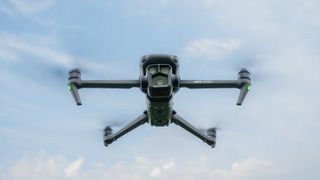
1. The list in brief ↴
2. Best overall
3. Best value
4. Best DJI Mini alternative
5. Best for portability
6. Best DJI Mini
7. Best cheap Mini drone
8. Best pro drone
9. Best enterprise drone
10. Best attachable camera
11. More info
12. How we test
There's little doubt that one of the main reasons people buy drones is to capture aerial photos and videos with relative ease. With fantastic options available, there's undoubtedly something for every budget and specific requirement in terms of overall features and functionality.
Drone camera technology has moved on leaps and bounds in recent years, with even the best sub-250g models having tiny cameras that punch well above their weight in terms of image quality. But it's the medium-sized and larger drones that offer the best image quality thanks to larger image sensors and, in some cases, adjustable apertures.
Having an adjustable aperture is less important for stills photography, but for video capture it makes it much quicker and easier to make minor adjustments to exposure. You still have to use ND filters to reduce light entering the lens to control shutter speed, but the aperture removes the need to land and change filters if light changes during flights. The trade-off, of course, is that these drones are larger, heavier and ultimately less convenient to carry than sub-250g models.
If you're an absolute beginner, jumping straight onto one of the best camera drones may not be the best way to get started. So, if you’d prefer a budget model to learn how to fly with confidence or a mid-range option that will provide greater longevity check out our best beginner drones guide. For those with a bigger budget, our best drones guide will show you the best models available while our best FPV drones guide is perfect for thrill seekers looking for a first person view drone.
The Quick List
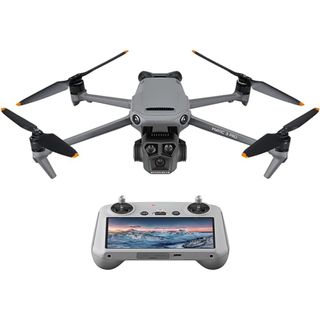
Best camera drone overall
The world's first consumer drone with three cameras - the Mavic 3 Pro offers exceptional image quality. Probably overkill for most users unless you're a pro.
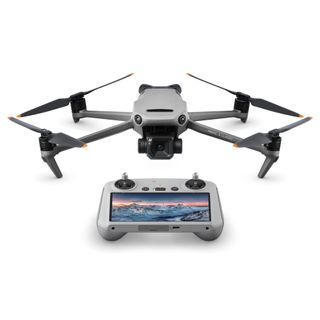
Best value for money
If the only camera you need on a Mavic 3 is the Four Thirds Hasselblad camera with an adjustable aperture, the Mavic 3 Classic is the perfect option.
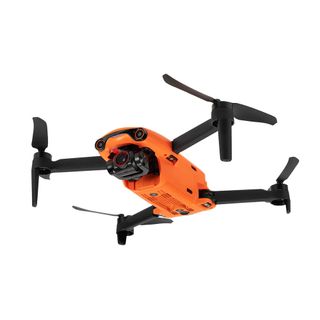
Best small camera drone
With 4K 30fps video in a small and foldable 249g drone, The Autel EVO Nano+ also offers collision avoidance for safer flights in complex environments.
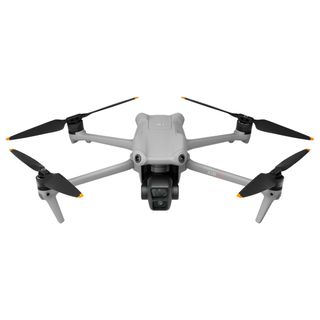
Best for portability
Thanks to excellent image quality, power and advanced features in this medium-sized drone, the DJI Air 3 is a versatile option for shooting photos and videos.
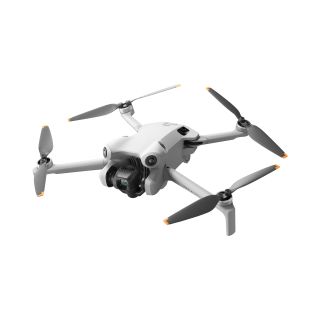
Best DJI mini drone
The DJI Mini 4 Pro is the best sub-250g drone available offering excellent image quality for photos and videos alongside advanced collision avoidance and subject tracking.
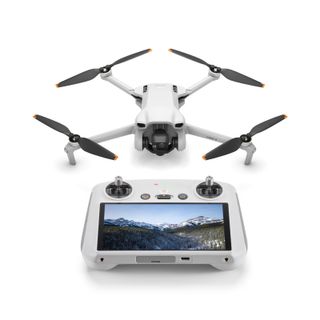
Best cheap mini drone
The DJI Mini 3 may not have all the features of the more expensive DJI Mini 3 Pro, but it shares the same camera and many features for a budget price.
Load the next 3 products ↴
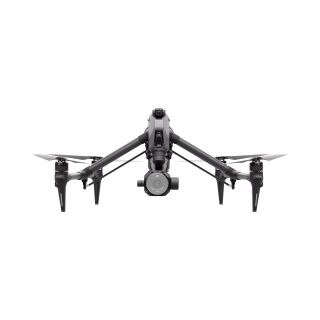
Best professional-use drone
With a full-frame camera offering interchangeable lenses, the DJI Inspire 3 is aimed at professional use cases such as Hollywood movies, television and precision surveying.
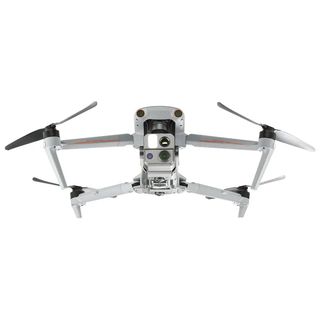
Best enterprise drone
The Autel EVO Max 4T is a feature-packed enterprise drone aimed at use by law enforcement, search & rescue and for mapping/surveying.
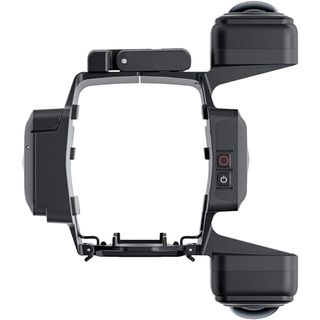
Best attachable drone camera
If you’d like to be able to create FPV-style videos with a DJI Mavic Air2/2S, the Insta260 Sphere is a 360° camera that will allow you to do exactly that.
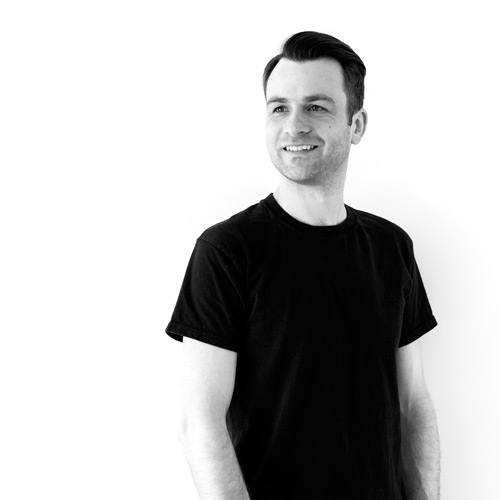
James is an award-winning freelance landscape and portrait photographer, as well as a highly experienced photography journalist working with some of the best photography magazines and websites with a worldwide audience. He’s also the author of The Digital Darkroom: The Definitive Guide to Photo Editing.
Best camera drones we recommend in 2024
Why you can trust Space.com
Best camera drone overall
















Specifications
Reasons to buy
Reasons to avoid
✅ You're looking for versatility: The three cameras on offer on this drone give you the ability to shoot different perspectives and different focal lengths at the same time, which can help produce more creative content.
✅ You want to shoot high-quality slow-mo: With this drone, you don't have to choose between quality and frame rates. You can shoot 5.1K up to 75fps, 4K up to 120fps and FHD up to 200fps.
❌ You're on a budget: With all the features on offer, this is quite an expensive drone and may be overkill for casual hobbyists.
🔎 DJI Mavic 3 Pro One of the best foldable drones on the market, this allows you to get stunning videos and offers great flexibility with three cameras that can film at the same time. The only real downside is the price, but we think beginners and pros would be pleased with this purchase. ★★★★★
Topping our list is the mighty DJI Mavic 3 Pro, which is hands down one of the best drones available in today's market, as we noted in our full DJI Mavic 3 Pro review. It's the first consumer drone to offer three onboard cameras that can operate simultaneously, opening up a range of new creative possibilities.
The main camera is a remarkable 20MP 4/3 Hasselblad camera, featuring an adjustable aperture ranging from f/2.8 to f/11, and up to 12.8 stops of dynamic range. It has an equivalent focal length of 24mm. Additionally, there's a 48MP 1/1.3-inch 70mm medium telephoto camera and a 12MP 1/2-inch 166mm telephoto camera. Considering the Mavic 3 Pro's price is comparable to the Mavic 3 and Mavic 3 Cine, it's like getting a highly functional 70mm camera thrown in for free. All three cameras support RAW and JPEG formats, delivering outstanding image quality.
In addition to its powerful camera setup, the Mavic 3 Pro comes with a range of advanced features designed to make your flying experience smooth and hassle-free. It offers two smart controller options, each with a 5.5-inch touchscreen, eliminating the need to connect your phone. Both controllers are highly responsive, ensuring a seamless flying experience without lag.
You get three different flight modes and 43 km/27mph wind resistance, as well as an array of safety features such as AirSense ADS-B to detect nearby aircraft and an Omnidirectional Obstacle Sensing system that uses multiple sensors to allow the drone to maneuver around obstacles independently. While this is an expensive drone that may be overkill for some people, we think it offers excellent value for money for those who can make use of its three cameras.
- Read our full DJI Mavic 3 Pro review
| Attributes | Notes |
|---|---|
| Design | Three cameras and two smart controllers. |
| Functionality | Easy to fly, with obstacle sensing technology. |
| Performance | Excellent image quality and videos up to 5.1K. |
Best value for money



















Specifications
Reasons to buy
Reasons to avoid
✅ You want excellent image quality at a more affordable price: This drone contains the same impressive Hasselblad 20MP camera as the other DJI Mavic 3 models but keeps the price down by doing away with the additional cameras.
✅ You want something easy to fly: With two different controller options and an Advanced Return to Home feature, you should be able to get the hang of this drone quite quickly.
❌ You're after an affordable beginner drone: While this is more affordable than the other DJI Mavic 3 drones, it's still quite pricey and there are several other cheaper options on the market for beginners.
🔎 DJI Mavic 3 Classic This is a great option for people who want the image quality of the DJI Mavic 3 drones without paying extra for additional cameras that they don't have need for. Although it's still not cheap, it's easy to fly and would make a good investment for keen beginners. ★★★★½
If you're after the very best image quality but your budget can't quite stretch to the first two drones on our list, then the DJI Mavic 3 Classic might be the one for you. DJI have managed to lower the cost of this drone by removing the additional telephoto lenses that appear on the other drones in the Mavic 3 range, but you'll still get the star of the show — the 20MP 4/3 Hasselblad camera.
This camera features an adjustable aperture ranging from f/2.8 to f/11 and has a lens equivalent to 24mm. It delivers outstanding image quality for both photos and videos, offering JPEG and RAW formats, 3x digital zoom and shooting capabilities of up to 5.1K video at 50fps, with a dynamic range of 12.8 stops. While other Mavic 3 models offer multiple camera options that may appeal to professionals, this fantastic camera is more than enough to meet the needs of most users on its own.
There are two controller options with this drone. You can choose between the DJI RC-N1 controller, which features a retractable smartphone holder, or the DJI RC smart controller, which features an integrated 5.5-inch touchscreen. After conducting our full DJI Mavic 3 Classic review, we think the improved user experience offered by the smart controller easily warrants the relatively small difference in price.
The Mavic 3 Classic is also packed with high-end features, including precise GPS positioning, Advanced Return to Home, three different flight modes, aircraft detection and geofencing. Its multiple vision sensors detect and avoid obstacles in all directions and contribute to improved subject tracking. So, if the single camera is enough for you, you really are getting the complete package with this drone.
- Read our full DJI Mavic 3 Classic review
| Attributes | Notes |
|---|---|
| Design | Single Hasselblad 20MP camera and controller options. |
| Functionality | Easy to fly, with good safety features. |
| Performance | Fantastic image quality with 12.8 stops of dynamic range. |
Best DJI Mini alternative










Specifications
Reasons to buy
Reasons to avoid
✅ You want to avoid having to negotiate regulations: Since it weighs under 250g this drone avoids some of the registration requirements set by the FAA in the US or the CAA in the UK.
✅ You want something easily portable: Weighing only 249g and measuring just 142 × 94 × 55mm when folded, this drone is easy to carry around on outdoor adventures.
❌ You want to film 4K slow-mo videos: The 4K setting on this drone's camera is limited to 30fps, so won't be enough for slow-mo filming.
❌ You don't like using an app: The controller doesn't come with a built-in screen and relies on the AutelSky app on your smartphone to work.
🔎 Autel EVO Nano+ This drone packs a lot of big-hitting features into a light and compact package. It's easy to use for beginners, with effective collision avoidance technology, and its light weight means it isn't subject to as many regulations, so it's relatively hassle-free for those new to drone photography. ★★★★
The Autel EVO Nano+ is a regulator-friendly sub-250g drone that still offers many of the advanced features found on bigger and more expensive drones. It's a great option to consider, especially for beginners. Its compact and foldable design makes it extremely easy to transport, and it comes in four different colors: Classic Orange, Deep Space Gray, Blazing Red, and Arctic White.
The drone's controller has a built-in phone holder, and to access all the controls, you'll need to download the AutelSky app. The controller feels comfortable to hold, and we found the AutelSky app easy to understand and use in our Autel EVO Nano+ review. The thumb sticks on the controller strike a good balance, being responsive without being too sensitive.
One notable feature of this drone's size is its advanced collision avoidance system. It relies on three-way binocular vision sensors positioned at the drone's front, bottom and rear. These sensors detect obstacles and can automatically slow down or halt the drone to avoid collisions. Beginners will likely appreciate the added safety assurance provided by this feature. Additionally, the drone includes convenient automated flight patterns to help beginners get started easily.
Regarding camera features, the EVO Nano+ sports a very respectable 12.5MP 1/1.28-inch sensor with an equivalent focal length of 23mm and a fast f/1.9 aperture. This means it excels at shooting in low-light conditions, but you'll need to use ND filters to maintain its shutter speed if you want to shoot smooth-looking video. Video is available up to 4K at 30fps and is clear and crisp.
If you're in the market for a sub-250g drone or you're a beginner looking for your first camera drone, the EVO Nano+ is a great feature-packed option.
- Read our full Autel EVO Nano+ review
| Attributes | Notes |
|---|---|
| Design | Compact and lightweight with advanced features. |
| Functionality | Collision avoidance and automated flight modes. |
| Performance | Fast f/1.9 aperture great for low-light conditions. |
Best for portability










Specifications
Reasons to buy
Reasons to avoid
✅ You're looking for excellent optics in a small package: This is the smallest and lightest of the drones that come with a one-inch sensor, so it strikes an ideal balance between image quality and portability.
✅ You want to grow with it: It has user-friendly features to suit beginners coupled with image quality and video specs to suit more advanced users, meaning you won't be upgrading as quickly.
❌ You need an adjustable aperture: The aperture on this drone's cameras are fixed, so you'd need to use ND filters to control shutter speed when filming video.
🔎 DJI Air 3: The main selling point of this drone is that it offers portability without compromising on excellent image quality. That makes it ideal for keen photographers and videographers who like to carry a drone with them on days out, but the fixed aperture may be a deal-breaker for some. ★★★★½
If you're looking for a camera drone with a bit more oomph than the DJI Mini 3 but with a similar level of portability, we think the DJI Air 3 could be just what you're looking for.
It sits nicely between the Mini and Mavic lineups from DJI, being much more compact than the Mavic models, although not much lighter in weight. During our full DJI Air 3 review, we found that the drone didn't miss a beat when we tested it with wind gusts just below its maximum wind resistance of 27mph. The battery life has also been significantly improved, giving us around 35 minutes of flight time in low wind conditions before Return to Home was suggested at 20% battery.
The drone also comes with three different controller options. It has the standard DJI RC-N2 controller, which requires a smartphone to be plugged into it, and two smart controller options—the more expensive of the two is the most feature-packed.
Instead of just one camera, the Air 3 comes with two cameras. Both cameras use the same high-quality 12MP/48MP 1/1.3-inch sensor found in the Mini 3 Pro and Mini 3 models, with the key distinction being that one camera has a 24mm lens, while the other has a medium telephoto lens at 70mm.
We were also impressed with the Omnidirectional Obstacle Sensing system, which enables you to fly closer to obstacles like trees and buildings with peace of mind that you won't crash into them (but don't rely solely on this feature to avoid crashing). This feature makes it a great drone for beginners who want to hone their flying skills but still get fantastic images and videos, and we also think it suits more experienced fliers, too. It's not a cheap drone, but considering its array of features, specs, and how long you're likely to have it, we think it's worth the investment.
- Read our full DJI Air 3 review
| Attributes | Notes |
|---|---|
| Design | Folding portable design. |
| Functionality | Dual cameras provide excellent image quality. |
| Performance | User-friendly safety features make it great for users of all experience levels. |
Best DJI mini drone










Specifications
Reasons to buy
Reasons to avoid
✅ You need professional video features: The Mini 4 Pro may not have an adjustable aperture, but it can capture video in the flat D-Log M color profile for colour grading in a professional workflow.
✅ You need a sub-250g drone: The DJI Mini 4 Pro is the best sub-250g drone available with an impressive camera that can be rotated 90 degrees for both landscape and portrait format shooting.
❌ You don’t need pro-spec features: If you’re a beginner looking for excellent image quality at a lower cost, the DJI Mini 3 uses the same camera as the Mini 4 Pro but offers fewer advanced features overall.
❌ You need an adjustable aperture: When shooting video an adjustable aperture, alongside ND filters, can be incredibly useful. The Mini 4 Pro has a fixed f/1.7 aperture.
🔎 The DJI Mini 4 Pro is an incredible sub-250g drone offering excellent image quality and pro-level camera features. It may not be as good as the Mavic 3 series drones, but it’s subject to far fewer restrictions than larger and heavier models. ★★★★½
The DJI Mini 4 Pro is the most advanced sub-250g drone available, offering flagship features and functionality that make the model truly worthy of the 'pro' moniker. This is incredibly important because it provides advanced pilots and professionals with a regulator-friendly drone subject to fewer restrictions than larger models but with the most advanced features currently available.
Flight features include Omnidirectional Obstacle Avoidance to reduce the risk of crashes, excellent subject tracking, and Advanced Return to Home. As a result, this tiny drone is incredibly safe. As a bonus, it's easy to set up and fly with responsive controls allowing fast and slower cinematic flight.
As confirmed in our hands-on DJI Mini 4 Pro review, the image quality produced by the Mini 4 Pro is impressive given the drone's small size. The 12/48MP 1/1.3-inch sensor with large 2.4μm pixels is highly capable in bright and low light conditions, and high ISO handling is nothing short of impressive. Even the highest settings are virtually noise-free, which means you can shoot at any ISO setting without fear of image degradation.
The camera offers an equivalent focal length of 24mm with a fixed f/1.7 aperture and can be rotated 90° for portrait format shooting. Video can be captured in Standard and flat 10-bit D-Log M color profiles at up to 4K at up to 100fps for slow-motion capture. You can capture in both Raw and JPEG formats with full manual control of the camera available for both photo and video capture.
- Read our full DJI Mini 4 Pro review
| Attributes | Notes |
|---|---|
| Design | Under 250g with a 12/48MP camera. |
| Functionality | Smart controller, omnidirectional obstacle avoidance and advanced subject tracking. |
| Performance | Shoots high-quality videos in both portrait and landscape formats. |
Best cheap mini drone











Specifications
Reasons to buy
Reasons to avoid
✅ You're looking for a more affordable beginner option: If your budget can't quite stretch to the DJI Mini 3 Pro, then the DJI Mini 3 is a great option and comes with the same high-quality camera on board.
❌ You want more advanced flying features: To save money, this drone doesn't come with obstacle avoidance or subject tracking, so you'll need to be very careful not to let it bump into things when flying it.
🔎 DJI Mini 3 With the same excellent camera on board, this is a great alternative to the DJI Mini 3 Pro for those on a tighter budget who want a more accessible beginner model. The only catches are that it doesn't come with obstacle avoidance or subject tracking and the 4K video tops out at 30fps. ★★★★
Unlike many beginner drones that compromise on image quality, the DJI Mini 3 stands out by featuring the same camera found in the pricier DJI Mini 3 Pro, delivering excellent image quality for its price range. Opting for this drone means enjoying the high build quality and reliability associated with the DJI brand without overspending
The onboard camera features a 12MP 1/1.3-inch sensor with an equivalent focal length of 24mm. In our DJI Mini 3 review, we loved that the camera can be turned 90 degrees to shoot in either landscape or portrait mode depending on the look you're going for. It has a folding design typical of the DJI drones and is very regulator-friendly being only 248g in weight. This will let you fly it in areas that would be off-limits to heavier drones, which is particularly handy if you're new to drone flying or you live in a more populated area.
Of course, some compromises have been made to keep the price down on this drone. You don't get any collision avoidance, Timelapse or subject tracking, and 4K video is limited to 30FPS. You also can't take 48MP photos. However, we still feel it would fulfill the needs of most beginners and still produces stunning shots compared with other budget models on the market.
You'll also enjoy handy features like Quickshots automated flight patterns and a Return to Home function, which automatically brings the drone back to its take-off point when the battery runs low or the connection to the controller is lost. If you're looking for great value on a tight budget, we think the DJI Mini 3 is hard to beat.
- Read our full DJI Mini 3 review
| Attributes | Notes |
|---|---|
| Design | Excellent 12.1MP camera with 1/1.3-inch sensor. |
| Functionality | More basic, with no collision avoidance or subject tracking. |
| Performance | Films in portrait or landscape, but only 30fps at 4K. |
Best professional-use drone










Specifications
Reasons to buy
Reasons to avoid
✅ You have a huge budget: Not all professional drone pilots can justify the cost of a drone like this, but if you can afford the Inspire 3 and can take advantage of its features, it’s an incredible drone.
✅ You’re a high-end professional: If you work in movies, television or advanced surveying where precision and the best image quality are essential, this drone could be exactly what you need and more.
❌ You’re not a specialist pilot: This drone is aimed at specific professional use cases and has a price and features to match. It’s much more drone than most people could ever need.
❌ Speed is of the essence: The Inspire 3 takes time to set up and its size and weight mean it’s not the easiest drone to carry around when compared to prosumer models.
🔎 The DJI Inspire 3 is a large, heavy and expensive drone aimed at professional use. It’s packed with the most advanced features available on a DJI drone, and with an impressive full-frame camera the extremely high-quality photos and video the drone captures are truly amazing. ★★★★★
The DJI Inspire 3 is a high-end professional-level drone with an eye-watering cost but with features, functionality and image quality that blow other drones out of the sky. It’s primarily designed for cinematography and features fast and precise flight, with advanced features that enhance the safety and precision of the drone. This includes the ability for a pilot to fly the drone, using the FPV camera, while a camera operator can control the main camera.
The main camera is a full-frame Zenmuse X9-8K Air Gimbal Camera, which is compatible with four lenses that are sold separately and can capture 44.7MP photos in Raw and JPEG. Video can be captured in 8K up to 75fps and 4K up to 120fps in professional Raw video formats and flat color profiles for consistency within a professional workflow. Plus, there are many features and additional accessories aimed at professional filmmaking at the highest levels.
This is a large and heavy drone at 140.91oz / 3,995g, and the set-up time is longer, so it’s not as easy to transport or anywhere near as convenient as the DJI Mavic 3 Pro, for example. This won’t be a problem for professional drone pilots and camera operators working on film sets, but for enthusiasts working alone much of the time, indulging their hobby, it’s simply not a practical drone to carry around and set up on a whim.
- Read our full DJI Inspire 3 review
| Attributes | Notes |
|---|---|
| Design | A powerful drone aimed at the professional market. |
| Functionality | A highly precise drone with the most advanced features available. |
| Performance | Up to 8K video and excellent image quality overall. |
Best enterprise drone





Autel EVO Max 4T
Our expert review:
Specifications
Reasons to buy
Reasons to avoid
✅ You’re a working professional: For professional pilots working in law enforcement, search & rescue or mapping/surveying, the Autel EVO Max 4T is one of the best drones available for these purposes.
✅ You require simplicity: While the drone isn’t initially the most intuitive to operate, you will quickly find that operating the Autel EVO Max 4T is impressively simple.
❌ You don’t need pro-spec features: This drone is far from a consumer drone, and despite producing great image quality it’s much more expensive and feature-packed than most pilots require.
❌ You need a small drone: The Autel EVO Max 4T is smaller and lighter than many professional drones, but despite its folding design it’s still larger and heavier than medium-sized consumer options.
🔎 The Autel EVO Max 4T an exceptional drone for use in an enterprise setting thanks to the advanced features on offer, including the highly versatile three cameras and the Laser Rangefinder to name but a few. ★★★★½
The Autel EVO Max 4T is a high-end enterprise drone aimed at law enforcement, search & rescue and mapping/surveying, with features aimed specifically around these uses. This is a large and heavy folding drone that delivers enough power to reach speeds of up to 51mph (42 mph in EU regions), with a maximum wind resistance is 27 mph. It’s also IP43 rated for dust and water resistance making it a highly versatile drone that can be flown in even challenging weather conditions.
The Max 4T comes in a comprehensive kit that includes the excellent Autel Smart Controller V3 and a tough case. Only one battery is included so more will need to be bought separately, but maximum flight times per battery are advertised at up to 42. Deployment of the drone is also incredibly fast, and takes less than a minute for the drone and controller to connect ready for flight.
There are many features on offer including advanced obstacle avoidance, anti-jam and anti-interference technology, mission planning, and an A-Mesh system where multiple aircraft can be flown together to speed up enterprise operations such as mapping/surveying alongside many more features.
The gimbal is home to a wide-angle, a zoom a thermal camera and a Laser Rangefinder. The zoom range is up to 160x and switches between an optical and digital zoom automatically. Plus, when capturing photos and videos, these are captured with both the thermal camera and either the wide-angle or zoom camera depending on which is automatically active as a result of the zoom factor selected. Overall, this is an excellent option for pilots working in the aforementioned areas.
- We are still testing this, check back in soon for a full review.
| Attributes | Notes |
|---|---|
| Design | Folding design and compact size for an enterprise model. |
| Functionality | Advanced professional features and functionality. |
| Performance | Three cameras and a Laser Rangefinder for high-performance applications. |
Best attachable drone camera




















Specifications
Reasons to buy
Reasons to avoid
✅ You already own a DJI Mavic Air 2 or DJI Air 2S drone: This camera is specifically designed to be compatible with these two drones and offers you great 360° shots without the drone in sight.
❌ You're looking for a complete package: You'll need to buy the DJI Mavic Air 2 or DJI Air 2S drone separately to be able to make use of this camera.
🔎 Insta360 Sphere Owners of the DJI Mavic Air 2 and DJI Air 2S drones will love the seamless 360° views on offer with this camera. With video available up to 5.7K, you can produce some very creative shots and you're also able to mimic the effects of an FPV drone. ★★★★
In a departure from the rest of our list, we wanted to include the Insta360 Sphere because it offers an innovative way of capturing FPV-style drone footage from your DJI Mavic Air 2 or DJI Air 2S camera drone. If you're not sure of the difference, take a look at our 'What are FPV drones?' article to find out more.
The Insta360 Sphere consists of one camera facing upward and another facing downward, allowing you to capture a complete 360-degree view during flight. It securely attaches to your drone's airframe, ensuring no parts of the drone appear in the shot. After capturing footage, you can apply video effects using templates and keyframes through either the phone app or desktop app during editing, which we liked in our Insta360 Sphere review.
This brings the recent 360-degree photography trend neatly to the world of drones and opens up a whole host of creative possibilities, but unfortunately, it is only compatible with the DJI Mavic Air 2/2S line of drones.
The cameras are equivalent to 35mm with an aperture of f/2, providing 5K video at up to 30 FPS and 4K video at up to 50 FPS. They deliver good image quality and allow you to choose any camera angle, simulating FPV drones. You control the cameras using a phone app, but one drawback is that the WiFi range is limited to about 10 meters. However, if you start recording before takeoff, you should be set for the entire duration of the flight.
The standalone kit will set you back around $423/£440 and includes two sticky lens guards, two lens caps, one battery, a charging cable, lens cloth and a landing mat. Or you can choose to buy the memory card kit at around $440/£456 which includes an additional 64GB microSD card.
- Read our full Insta360 Sphere review
| Attributes | Notes |
|---|---|
| Design | Designed to be mounted on DJI Mavic Air 2 and DJI Air 2S drones |
| Functionality | Offers 360° and FPV-style shooting |
| Performance | Stunning video up to 5.7K |
More information about drone flight
For some, flying a drone is a fun end in itself. But for most people, the whole point of buying a drone is to be able to capture amazing aerial photos and videos, alongside being able to get a camera into locations and positions not accessible on foot. This means that the camera and the image quality it produces are important considerations when choosing the right drone for you.
All the drones covered in this article require you to register with the FAA (US) and CAA (UK) because they all weigh over 249g. It’s a simple process that involves a basic multiple-choice test, and once completed you’ll have a better idea of what you should and shouldn’t do with your drone. And most importantly, you’ll be legal to fly your drone and not be at risk of receiving a hefty fine. For more detailed information, check out our guide to drone regulations.
We’ve covered the best camera drones available right now in this article, but even if you’re looking for something smaller, lighter and/or less expensive, even beginner drones can provide excellent image quality. And if they're too expensive, we do have a look at the cheapest drone deals right now too.
How we test camera drones
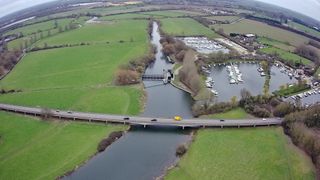
Camera drones are typically tested over several days in different locations, environments and weather conditions (excluding rain) to test flight performance, flight features, overall handling and image quality for both photo and video capture. With these models, the emphasis is on the camera features and functionality, although flight performance remains an important aspect of testing.
Drones are flown using manual flight patterns to test the connection between the aircraft and the controller, latency between the two, the accuracy of the controls, app connection and reliability and the flight experience in general. And if automated flight patterns and collision avoidance are available, these are always tested to assess accuracy and performance when capturing video.
All testing is conducted in a way that meets local aviation laws and restrictions to ensure that all flights are safe and legal. Drone laws vary from region to region, so you must check local laws to ensure that you’re following the guidelines for your country before embarking on your first drone flights.
Join our Space Forums to keep talking space on the latest missions, night sky and more! And if you have a news tip, correction or comment, let us know at: community@space.com.
Get the Space.com Newsletter
Breaking space news, the latest updates on rocket launches, skywatching events and more!
James is an award-winning freelance landscape and portrait photographer, as well as a highly experienced photography journalist working with some of the best photography magazines and websites with a worldwide audience. He’s also the author of The Digital Darkroom: The Definitive Guide to Photo Editing. www.jamesaphoto.co.uk
- Rowena CockettContributing writer
- Jase Parnell-BrookesChannel Editor